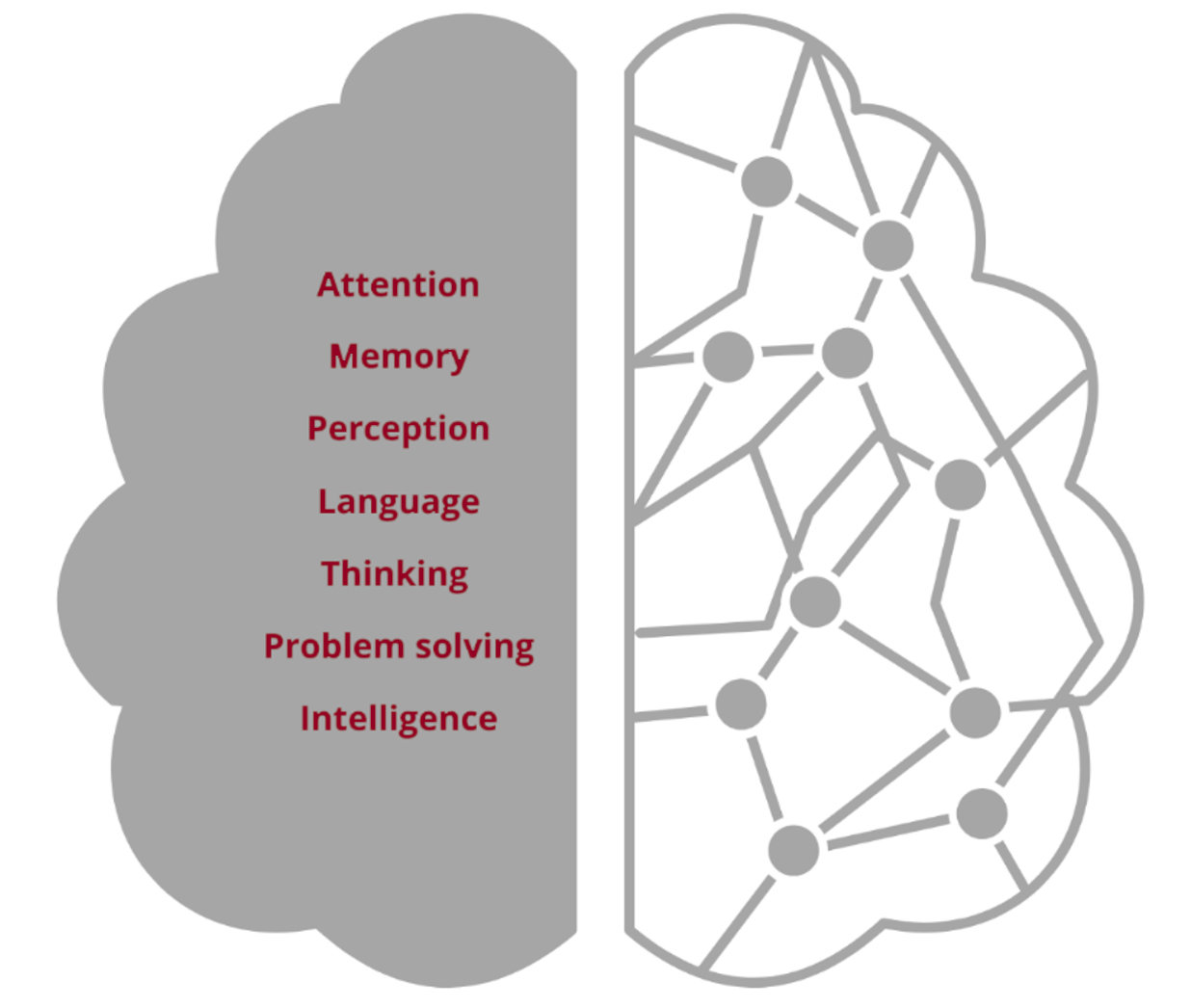01.03.2023
What is cognitive psychology, and how to use eye tracking for it?
 by Mirta Mikac, Product Manager
by Mirta Mikac, Product Manager
According to American Psychological Association (APA), cognitive psychology is one of the principal subfields of psychology. It is also described as the field exploring internal mental processes, including perception (our ability to see or hear the world around us), attention (our capability to selectively focus on one piece of information while disregarding irrelevant details), memory, thinking, use of language, learning, and problem-solving¹. While cognitive psychology mainly focuses on cognitive processes through inferences from our behavior, cognitive neuroscience, on the other hand, concentrates on establishing connections between mental processes and resulting brain activity. Its primary focus is researching the underlying biology influencing our information processing¹.
Cognitive psychology in a nutshell

Even though cognitive psychology is a relatively modern subfield of the dynamic field of psychology, its importance is rapidly increasing as cognitive processes have been integrated into various other subfields of psychology, such as abnormal (dealing with psychopathology and deviations in behavior), educational (studying how learning processes can be improved with the knowledge retention), developmental (examining various changes, including the cognitive ones, which happen throughout our lifespan), and social (understanding of our perception about others and how this perception affects our choices, behaviors, and beliefs).
How it all started
Despite being a relatively young branch of psychology, cognitive psychology became one of the most popular subfields. It grew into prominence between the 1950s and 1970s. In earlier times behaviorism approach was dominantly advocating the ideology of humans learning their behaviors from interacting with their environment2. The focus was strictly on observable behavior, while emotions and thoughts were not considered. However, with the cognitive revolution, researchers, based on complex representations and computational procedures, started emphasizing that our internal processes affect behavior3. This resulted in research expanding to consider memory, attention, and language acquisition in relation to observable behavior.
The most important event for the field of cognitive psychology dates to 1967 when German psychologist Ulric Neisser5 introduced the term cognitive psychology in his ground-breaking book Cognitive Psychology4 and is hence considered the father of this field. His main research focus was on perception and memory, where he challenged behaviorist theory with his postulations that mental processes could be measured and subsequently analyzed.

The role of eye tracking in cognitive psychology
1
APA Dictionary of Psychology, American Psychological Association, https://dictionary.apa.org/cognitive-psychology
2
Watson, J.B. (1913). Psychology as the behaviorist views it. Psychological Review, 20, 158-177.
3
Solso, R.L., MacLin, M.K., & MacLin, O.H. (2005). Cognitive psychology (7th ed.). Pearson Education New Zealand.
4
Neisser, U. (1967). Cognitive Psychology. Appleton-Century-Crofts.
5
Photo of Ulric Neisser: Emory Magazine Spring 2012, Emory University, https://www.emory.edu/EMORY_MAGAZINE/issues/2012/spring/register/tribute-neisser/index.html
6
Ryan, J.D., & Shen, K. (2020). The eyes are a window into memory. Current Opinion in Behavioral Sciences, 32, 1-6.
7
Ryan, J.D., Shen, K., & Liu, Z. (2019). The intersection between the oculomotor and hippocampal memory systems: empirical developments and clinical implications. Ann N Y Acad Sci.
8
Fooken, J., & Spering, M. (2019). Decoding go/no-go decisions from eye movements. Journal of Vision, 19(2), 5.
9
Spering, M. (2022). Eye Movements as a Window into Decision-Making. Annual Review of Vision Science, 8, 427-448.
10
Liu, Z.-X., Shen, K., Olsen, R.K., & Ryan, J.D. (2017). Visual sampling predicts hippocampal activity. J Neurosci, 37, 599-609.
11
Wynn, J.S., Olsen, R.K., Binns, M.A., Buchsbaum, B.R., & Ryan, J.D. (2018). Fixation reinstatement supports visuospatial memory in older adults. J Exp Psychol Hum Percept Perform, 44, 1119-1127.
12
Kowler, E. (2009). Attention and Eye Movements. Encyclopedia of Neuroscience, 605-616.
